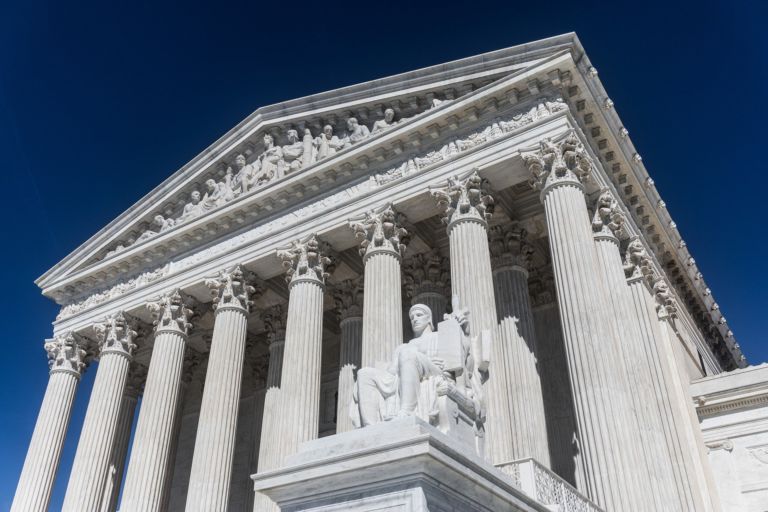In this installment in my series dealing with problems arising out of the interplay between the new social media and the law, I want to discuss a case that involves a local plaintiff, two conflicting federal laws, and a global menace.
The case is Cain v. Twitter. The local plaintiff is Anne Cameron Cain, daughter of Raleigh attorney and former United States Ambassador to Denmark Jim Cain. The federal laws are the Antiterrorism Act (ATA), which makes it possible for terrorists to be sued by their victims and their victims’ families, and the Communications Decency Act (CDA), which shields Internet service providers from liability for content posted by their users. The global menace is Islamic terrorism.
On November 13, 2015, terrorists associated with the self-styled “Islamic State” (more commonly known as “ISIS”) carried out a terrorist attack in Paris that killed 130 innocent victims, including a college student from California named Nohemi Gonzalez. On March 22, 2016, ISIS terrorists from the same cell carried out a terrorist attack in Brussels that killed 32 victims, including Cameron Cain’s husband, Alexander, and her sister-in-law, Sascha.
In January of this year, Cameron and Nohemi’s mother, Beatriz Gonzalez, sued Twitter for punitive damages pursuant to the ATA. In their complaint, they assert that Twitter “knowingly provided material support and resources to ISIS, a notorious terrorist organization that has engaged in and continues to commit terror attacks, including the … attacks … that murdered … Alexander … Sascha … [and] Nohemi.”
Last month, Twitter moved for summary judgment under the CDA, Section 230(c) of which states:
No provider or user of an interactive computer service shall be treated as the publisher or speaker of any information provided by another information content provider.
Twitter claims this provision shields it from liability for ISIS’s use of its site, and at least one federal court appears to agree. Last year, the families of two U.S. contractors who were killed by ISIS terrorists in Jordan sued Twitter under the ATA, but their case was dismissed. The U.S. District Court for the Northern District of California held that “As horrific as these deaths were, under the CDA Twitter cannot be treated as a publisher or speaker of ISIS’s hateful rhetoric and is not liable under the facts alleged.”
This is particularly bad news for Cameron and Beatriz because in April, at Twitter’s request, Cain v. Twitter was transferred from the U.S. District Court for the Southern District of New York, where it was originally filed, to the Northern District of California. It will be very surprising if that court decides to ignore its own precedent.
Even if their case is dismissed, however, it won’t necessarily mean that Cameron and Beatriz have failed. As they explain in a New York Times opinion piece, punishing Twitter isn’t their primary objective:
Our primary motivation in taking action is not to blame others. We want to make it less likely that families will suffer similar anguish in the future. …
[W]e believe that Twitter doesn’t do enough to proactively monitor, identify and remove terrorist-related accounts and hasn’t made an effective or prolonged effort to ensure that the accounts are not re-established. In short, Twitter’s actions are too little, too late.
Hany Farid, the chairman of the computer science department at Dartmouth College and senior adviser at the Counter Extremism Project, has suggested one way Twitter could do more. He has developed software that can block terror-related posts on the internet. It could be used to create a database of known extremist content and prevent future uploads of the material on social media. …
We both used social media platforms, including Twitter, to frantically search for our loved ones in the hours following the attacks. We know that our lawsuit will not diminish the power of social media platforms, but if our taking a stand diminishes the ability of the Islamic State and its demonic brethren to carry out future murderous campaigns, then perhaps we will have spared others the fate of Nohemi, Alexander and Sascha.
Lawsuits like Cain v. Twitter don’t just threaten social media providers like Twitter with punitive damages. By making the public more aware of how terrorists are abusing social media, they threaten them by encouraging retaliatory responses by the public and by regulators. Moreover, it appears that these threats have already had an effect. As Cameron and Beatriz point out, as recently as 2014, Twitter executives were defending their refusal to block access by terrorist groups by saying things like, “If you want to create a platform that allows for freedom of expression for hundreds of millions of people around the world, you really have to take the good with the bad,” and “One man’s terrorist is another man’s freedom fighter.” More recently, however, Twitter has been quick to announce its suspension of accounts for “threatening or promoting terrorist acts.”
I don’t know whether Cameron and Beatriz are right that Twitter and the other social media giants could do more to block terrorists who want to make use of their platforms, but it certainly seems possible. The targeted ads I receive make it clear that those companies are capable of scanning and analyzing everything I do and say on social media. And the many recent stories of users being suspended for posting politically incorrect opinions make it clear that their commitment to freedom of expression is far from absolute.
Given all the knowledge and talent they have at their disposal, it seems reasonable to hope that the social media giants will soon begin to completely block the use of their services by terrorist organizations. If that happens, much of the credit will go to Cameron and Beatriz and all the other victims’ families who have pressured them to do so.


